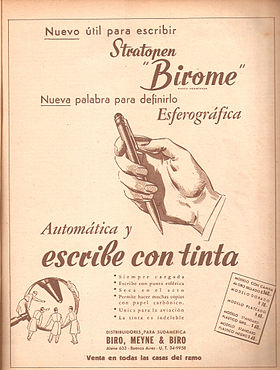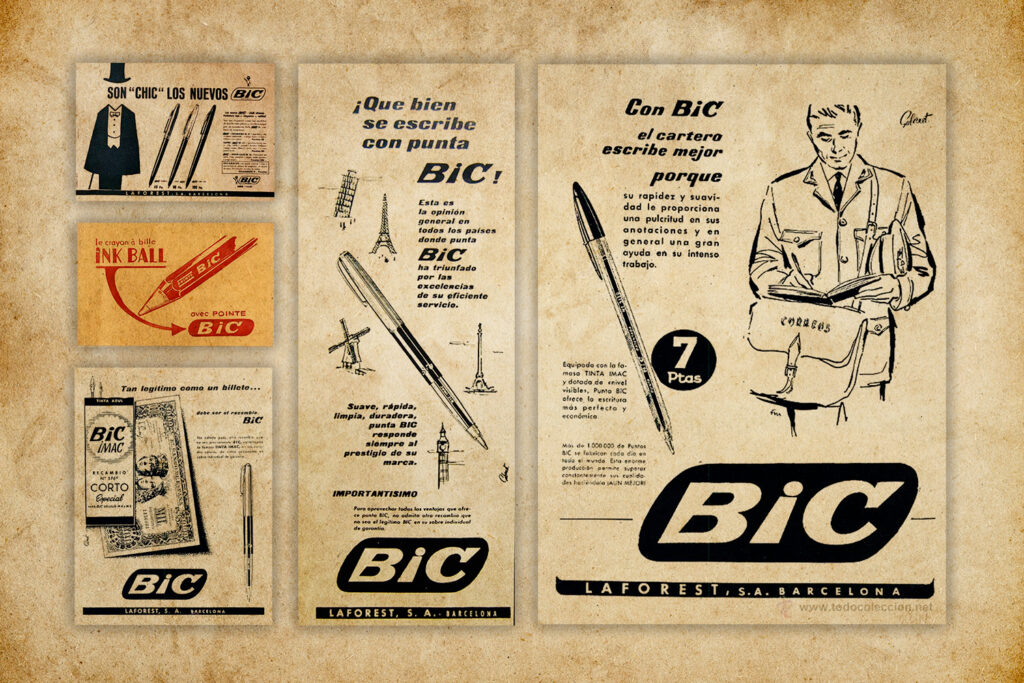The origin
Marcel Bich was born in 1914 in Turin. His mother, Marie Brigitte de Orlí, was a French noblewoman, and his father, Mario Bich, a futurist engineer with an affinity for all things modern. Mario had a passionate interest in machines, technology and speed, and as a tireless inventor, he instilled his concerns in his only son.
Although Marcel studied in Madrid and Paris, he did not complete his university studies in philosophy, since his creative and innovative spirit kept him away from academic concentration. From a young age, Marcel loved creating artifacts, even just to have them exist in his mind. At nineteen, she was already making a living selling intimate clothing at home. In 1934, he began working at an office supply company, and five years later he became the company’s director. However, its progress was interrupted by a crucial event: World War II.
After the war, Marcel regained his momentum. His first step was to buy an office supplies factory from a bankrupt friend. His great dream was the creation of a metallic ball, and this seemingly small detail earned him fame. Inspired by the design of Laszlo Biro, a Hungarian refugee in Argentina, Marcel created the first ballpoint pen. This tip regulated the flow of ink in a way that put an end to annoying smears.
En Argentina, el término “birome” se utiliza comúnmente para referirse al bolígrafo. La palabra “birome” es un regionalismo que se ha arraigado en el lenguaje cotidiano de Argentina y algunos otros países de América Latina. La razón detrás de este uso particular se relaciona con el origen del bolígrafo.
The word “birome” comes from the surname of the Hungarian inventor László Bíró, who developed the first functional ballpoint pen in 1938. Bíró emigrated to Argentina during World War II, and in 1943, together with his brother György Bíró, they patented their invention in the South American country. The Argentine company Eterpen S.A. began manufacturing these pens under the name “birome,” deriving from the surname Bíró and “rome,” which refers to writing pens.

Years later, Marcel Bich had another revolutionary vision in terms of consumption: the non-refillable gas lighter. It was comfortable, economical and highly functional.
Another important innovation followed soon after: the disposable razor.
Marcel Bich died in 1994 at the age of 79, after three marriages and eleven children. His notable achievement was the daily sale of fifteen million pens worldwide.
Analysis of the logo and its evolution
The history of the Bic logo dates back to its earliest days and has evolved over time. Initially, the company operated with a simple logo design consisting of an inscription of the brand name in 1950. The BIC logo was made of three letters «BiC» within a red parallelogram with rounded corners. Over time, Bic moved towards a more distinctive and recognizable approach.

This evolution in logo design reflects Bic’s ability to adapt to market trends and maintain a strong visual identity over time.

The brand has taken care of every detail in its visual identity, managing to fully reflect the scope and values of the company. In the center of the Bic logo, the company name stands out in large, expressive letters, while on the left side a thematic symbol is presented: a small man holding a large pen in his hands. This original design sets Bic apart from other similar manufacturers. Additionally, the use of bright colors conveys a friendly and positive attitude.
Developed by graphic designer Raymond Savignac who created an original image of a stylized man with a black ball for a head. He had a pen on his back. This symbol is located near the name of the company itself. The inscription was framed in a non-standard author’s font.


You may be interested











